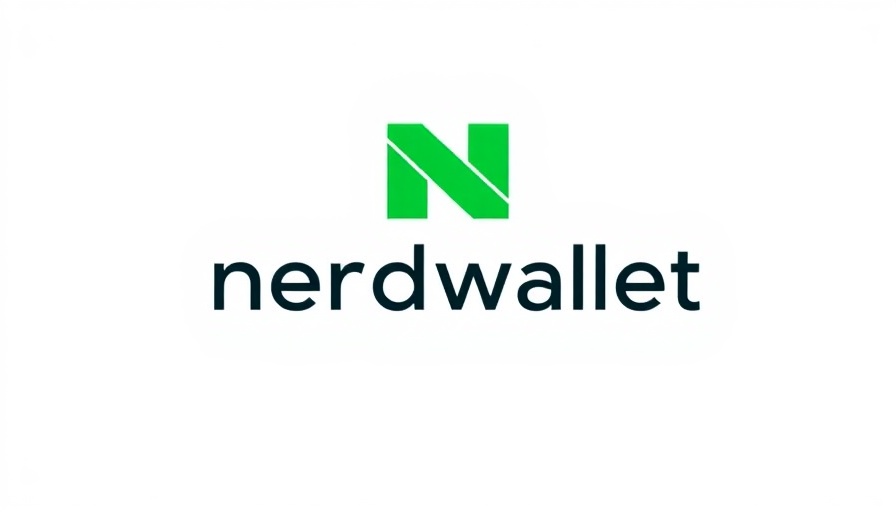
Unlocking Business Credit: A Game Changer for Small Enterprises
In today's competitive landscape, the path to financial freedom often begins with one key factor: business credit. Understanding how to obtain business credit can be the crucial lifeline for your startup or growing business, especially when you have limited resources. Achieving $150,000 in business credit without a personal guarantee opens up a world of possibilities. But how does a business owner effectively maneuver this process? Let’s delve into the essential steps undertaken to accomplish this feat.
In 'Get $150K in Business Credit with NO Personal Guarantee (PROVEN!)', the discussion dives into the essential strategies for securing business credit, exploring key insights that sparked deeper analysis on our end.
Why Business Credit Matters: Empower Your Business
Building business credit is not just about securing funding; it's about empowering your business to self-sustain financially. By establishing a distinct credit profile and score, your business can self-fund its operations, marketing, and expansion. With business credit, you can purchase inventory, invest in technology, or cover unexpected expenses without relying on personal savings or credit. This autonomy is vital for any entrepreneur looking to scale their operations.
Step One: Separate Yourself from Your Business
To lay the groundwork for successful business credit, the first step is to ensure that your business is recognized as a separate entity from yourself. This separation involves creating a Limited Liability Company (LLC) or Corporation, complete with an Employer Identification Number (EIN), a dedicated physical address, and a separate business bank account. Having a dedicated website and professional email adds further credibility to your enterprise, making it more attractive to lenders and credit institutions.
Step Two: Establishing Your Business Profile with Credit Reporting Agencies
Once your business is structured correctly, the next move is to get set up with business credit reporting agencies, notably Dun & Bradstreet, Equifax, and Experian. Obtaining a Dun & Bradstreet D-U-N-S number is essential. This unique identifier allows creditors to accurately assess your business’s credibility. Following this, the credit profiles on Equifax and Experian will be automatically created when your business engages with vendors that report transactions to them.
Step Three: Securing Initial Credit
The cornerstone of building your business credit lies in securing initial credit that will report back to these agencies. Some avenues to explore include:
Secured credit cards: These cards require a cash deposit but are a reliable way to establish a trade line with credit agencies.
Subprime lenders: These lending institutions provide financing options like merchant cash advances and revenue-based lending, which often report to credit agencies.
Micro lenders and alternative lenders: Many of these lenders cater to business owners and report timely payments.
Starter vendors: Companies like Grainger and Uline offer credit to new businesses without demanding personal guarantees. Their timely payment reports can significantly enhance your credit profile.
Credit programs offering multiple cards simultaneously: This approach provides high limits and can significantly jump-start your credit journey.
Continuing to Build and Sustain Business Credit
Once initial credit has been established, the next steps are to keep pushing forward and build on that positive credit reputation. This can involve gaining vendor credit with established retailers and increasing the range of financing options available to your business. As your business credit profile expands, opportunities for unsecured loans, lines of credit, and favorable terms increase. It becomes easier to maneuver through financial challenges with confidence.
Common Pitfalls to Avoid in the Credit-Building Process
While embarking on this journey, it’s crucial to be aware of common misconceptions: not all lenders report timely payments, and you should be discerning about whom you choose to borrow from. Always verify whether the lender reports your on-time payments to credit agencies, as a failure to do this could harm your effort to build a strong credit history.
Tools and Resources to Support Your Credit Journey
To assist you further, there are numerous online tools and resources available. Services like Credit Suite offer in-depth guides and systems designed to aid entrepreneurs in understanding the business credit landscape effectively. They detail steps and provide guidance on avoiding common pitfalls.
Conclusion: Your Path to Business Credit Awaits
In the quest to secure $150,000 in business credit without personal guarantees, following a structured approach is key. Understanding the steps involved, from separating your personal and business finances to maintaining a robust credit profile, can lead to successful outcomes. The ability to leverage business credit can quickly translate into financial independence and growth opportunities for your business.
Are you ready to take the next steps toward securing business credit? Explore the resources available to you and seize the opportunity to learn how to secure funding that empowers your entrepreneurial journey!
 Add Row
Add Row  Add
Add 




Write A Comment